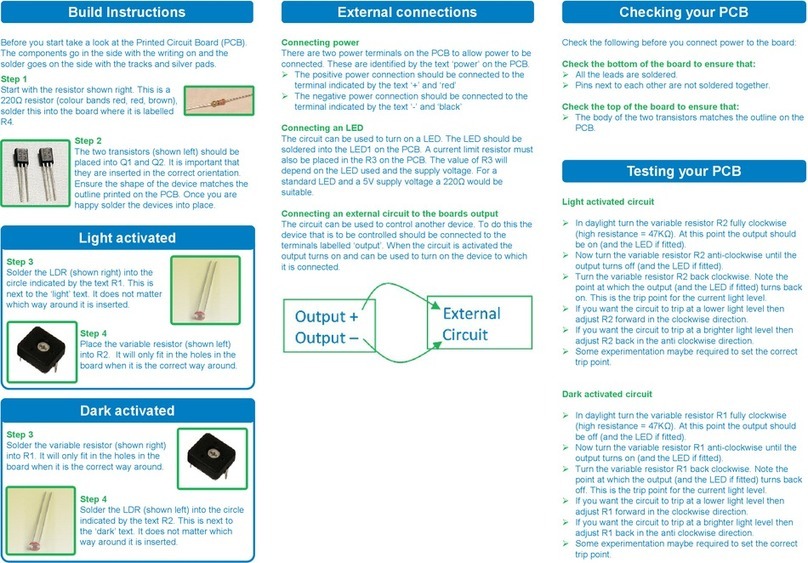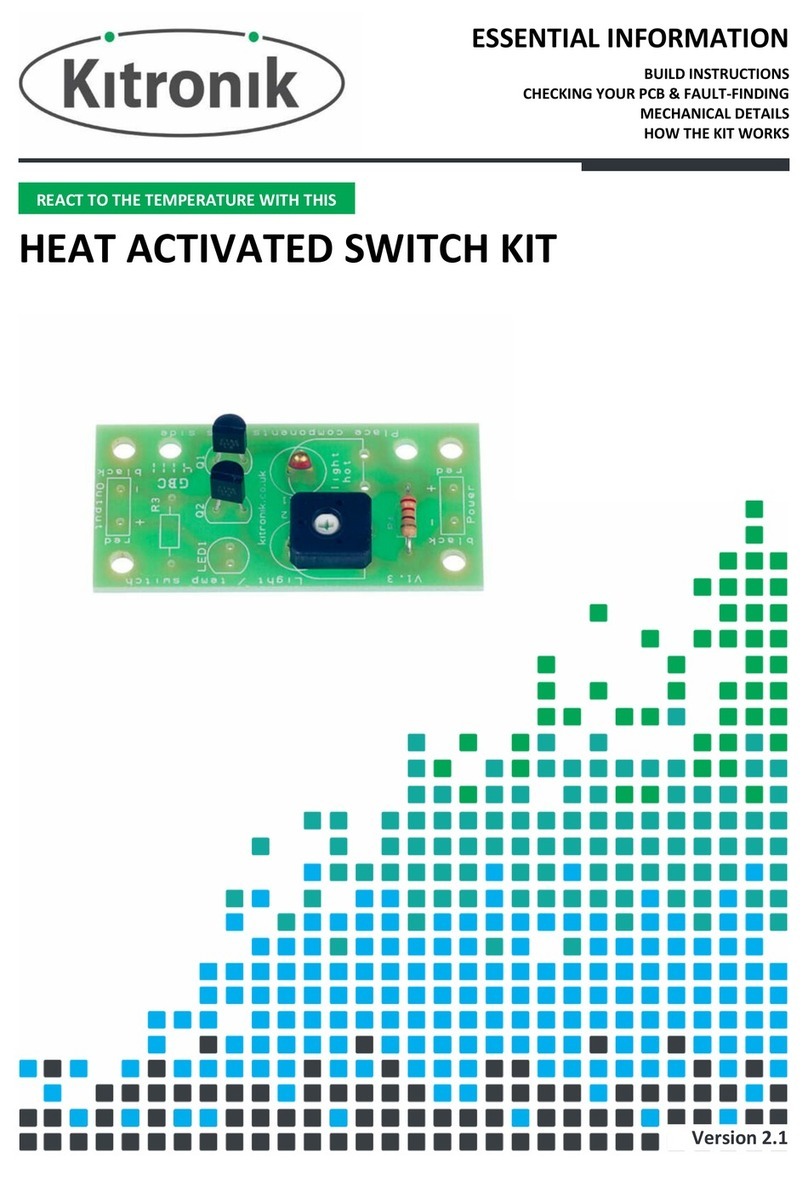Light Activated Switch Teaching Resources
www.kitronik.co.uk/2112
Darlington Pair
What is a Darlington Pair?
A Darlington Pair is two transistors that act as a
single transistor but with a much higher
current gain.
What is current gain?
Transistors have a characteristic called ‘current
gain’. This is referred to as its hFE.
The amount of current that can pass through
the load when connected to a transistor that is
turned on equals the input current x the gain
of the transistor (hFE).
The current gain varies for different transistor and can be looked up in the datasheet for the device. Typically, it may
be 100. This would mean that the current available to drive the load would be 100 times larger than the input to the
transistor.
Why use a Darlington Pair?
In some applications, the amount of input current available to switch on a transistor is very low. This may mean that
a single transistor may not be able to pass sufficient current required by the load.
As stated earlier, this equals the input current x the gain of the transistor (hFE). If it is not possible to increase the
input current, then we need to increase the gain of the transistor. This can be achieved by using a Darlington Pair.
A Darlington Pair acts as one transistor but with a current gain that equals:
Total current gain (hFE total) = current gain of transistor 1 (hFE t1) x current gain of transistor 2 (hFE t2)
So, for example, if you had two transistors with a current gain (hFE) = 100:
(hFE total) = 100 x 100
(hFE total) = 10,000
You can see that this gives a vastly increased current gain when compared to a single transistor. Therefore, this will
allow a very low input current to switch a much larger load current.
Base activation voltage
In order to turn on a transistor, the base input voltage of the transistor will (normally) need to be greater than 0.7V.
As two transistors are used in a Darlington Pair, this value is doubled. Therefore, the base voltage will need to be
greater than 0.7V x 2 = 1.4V.
It is also worth noting that the voltage drop across the collector and emitter pins of the Darlington Pair when they
turn on will be around 0.9V. Therefore if the supply voltage is 5V (as above) the voltage across the load will be will be
around 4.1V (5V – 0.9V).
Load
5v
0v
Darlington
pair
Input
Load
5v
0v
Darlington
pair
Input






























